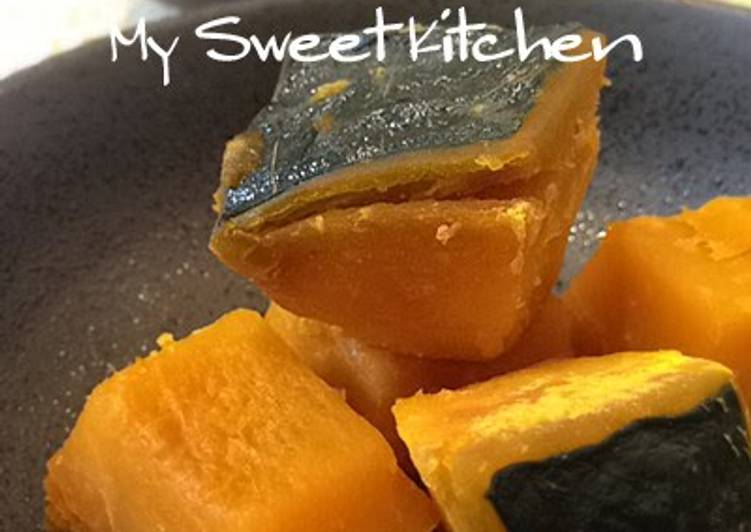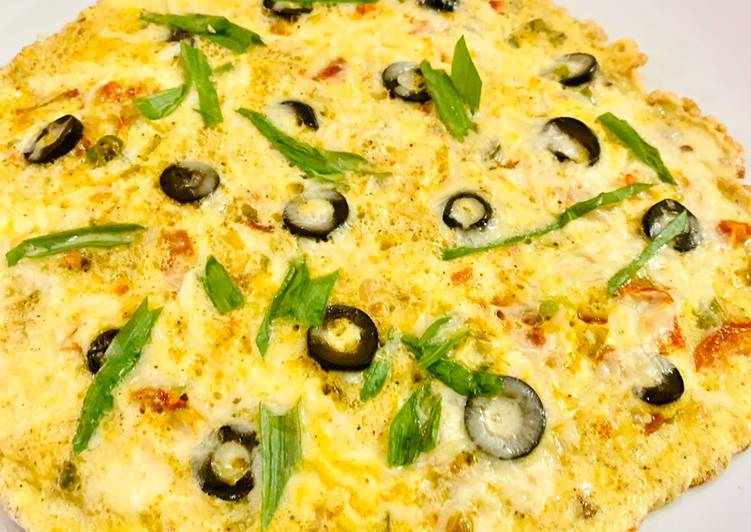
Hello everybody, I hope you’re having an amazing day today. Today, I’m gonna show you how to make a distinctive dish, simmered kabocha squash in a staub cocotte. One of my favorites. For mine, I am going to make it a bit tasty. This is gonna smell and look delicious.
Simmered Kabocha Squash (Japanese Pumpkin) かぼちゃの煮物. Therefore, you need to secure each kabocha piece, making sure they are laid in a single layer without overlapping in the pot. Then swirl the pot to mix the seasonings instead of using cooking utensils. -HEALTH BENEFITS OF THIS MEAL- Currently, one of the biggest health benefits of winter squash, including Kabocha Squash, is that it is extremely vitamin-rich.
Simmered Kabocha Squash in a Staub Cocotte is one of the most favored of recent trending foods in the world. It is easy, it’s fast, it tastes yummy. It is enjoyed by millions daily. Simmered Kabocha Squash in a Staub Cocotte is something which I’ve loved my entire life. They are fine and they look fantastic.
To begin with this recipe, we have to prepare a few components. You can cook simmered kabocha squash in a staub cocotte using 7 ingredients and 15 steps. Here is how you cook it.
The ingredients needed to make Simmered Kabocha Squash in a Staub Cocotte:
- Get 200 grams Kabocha squash
- Take 40 ml Dashi soup (Japanese soup, or substitute with 2 pinches of granulated Dashi stock added to water)…A
- Get 2 teaspoons…10 ml Sugar…A
- Take 1 teaspoon… 5ml Mirin…A
- Get 1 teaspoon… 5 ml Sake…A
- Take 1 teaspoon… 5 ml Soy sauce…A
- Get 1 teaspoon… 3-4 ml Soy sauce…B
With added mushrooms and ground chicken, it makes a great kabocha pumpkin squash meal combo. Just add all the ingredients to a bag and freeze for later. Simmered Kabocha Squash in soy sauce, dashi, and mirin is a delicious side dish that may be eaten at room temperature. It is also great for the lunchbox.
Instructions to make Simmered Kabocha Squash in a Staub Cocotte:
- Remove fibrous strands and seeds from pumpkin and cut into chunks of a 3-4 cm base (skin-side). Shave edges of the base to avoid the chunks breaking up during cooking.
- Add the A ingredients into the Staub cocotte, then add the Step 1 ingredients with the skin sides facing down. Avoid layering the pieces. Simmer over medium heat.
- How high the heat actually needs to be to amount to "medium heat" will depend on the size of your pot. For my round 16 cm cocotte, I turn the knob slightly right of the center on the gas hob for medium heat .
- When the liquid in Step 2 starts bubbling lightly, close the lid and let it simmer like that for 30 seconds.
- After 30 seconds, turn the knob to the far right to lower heat, and set a timer for 10 minutes.
- After 10 minutes, take off the lid and pour in the soy sauce [B] from the edge of the cocotte. Close the lid and set the timer for 5 minutes.
- After 5 minutes, turn off the heat. Keep the lid closed and just leave it like that for 30 minutes. The residual heat in the pot will slowly cook the contents through and allow the flavors to be absorbed.
- After 30 minutes, it's done. Very little liquid is left in the cocotte, just enough for it not to burn.
- Leaving the pot for 30 minutes in Step 7 makes the pumpkin so fluffy and dense, and yet also so moist and tasty, just as expected for Staub cooking.
- Staub-cooked vegetables are really tasty! They have a flavor that appeals to many people. Please try it out!
- Regarding the amount of pumpkin and seasonings, I often cook only half this amount and use a 10 cm round cocotte.
- Exactly half the ingredients (A and B) is OK for this size. See my diary [2013/09.10] for details.
- Tips: About 10 pieces of 3-4 cm cubed pumpkin roughly make up the amount in ingredients A and B above.
- Attention! Always use a big enough pot to lay out the pumpkin pieces without overlapping.
- This was cooked in 10 ml more dashi stock than called for in the ingredients list above (the rest of the ingredients are the same). It tastes more or less the same, but it is more moist.
With a vegetable peeler, remove some but not all the skin. Mix water, dashi, soy sauce, mirin, and sugar in a medium sized pot. Combine the water, soy, sugar and salt in a wide, shallow saucepan and add the cubed squash. Bring to a boil, then cover and reduce heat to a low simmer. In Japan, simmered kabocha squash is usually served with rice and other small sides such as seaweed salad, pickled daikon, beef yakitori or a quick dashi omelet.
So that’s going to wrap it up with this exceptional food simmered kabocha squash in a staub cocotte recipe. Thank you very much for reading. I’m confident you will make this at home. There is gonna be interesting food in home recipes coming up. Don’t forget to save this page in your browser, and share it to your loved ones, colleague and friends. Thanks again for reading. Go on get cooking!


